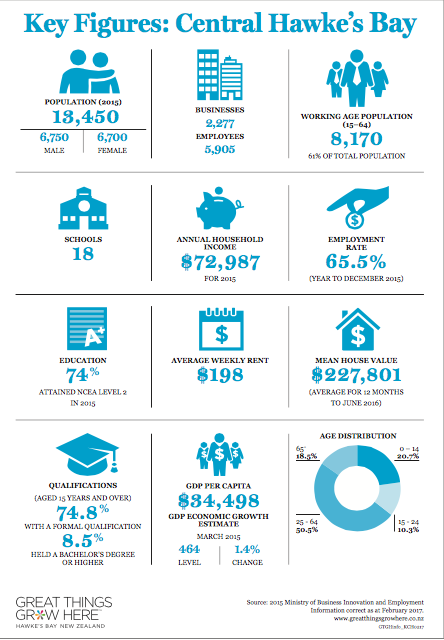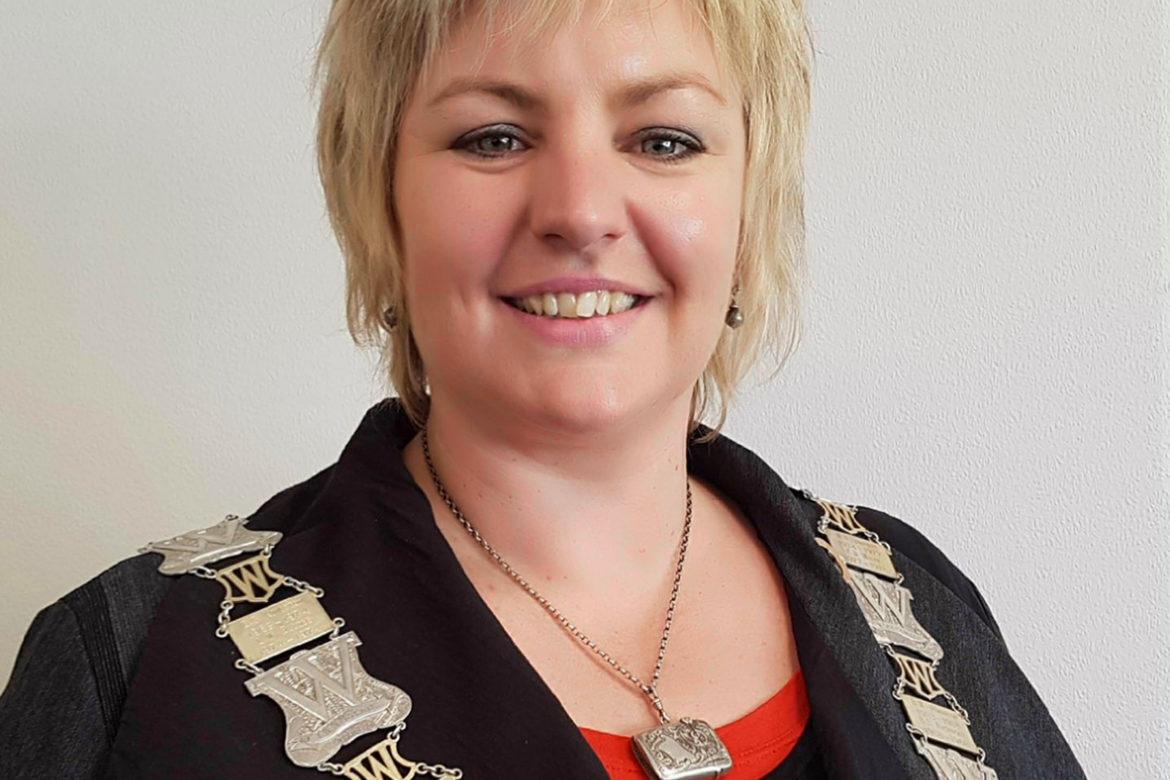Central Hawke’s Bay is defined by its boundaries, from the base of the 200-million-year-old Ruahine Range out to the Pacific Ocean on the East Coast. State Highway 2 runs through the centre of the region, with Napier’s port and airport around 70 kilometres away. Central Hawke’s Bay (or CHB as it’s usually referred to) is also well served by rail, with a station in Waipukurau en-route for trains running from Wellington to Napier, via Palmerston North.
Waipukurau and Waipawa are the largest townships, with many other settlements dotted around the region including Elsthorpe, Tikokino, Takapau, Otane and Porangahau.
CHB’s economy is largely based around the primary production sector, with the largest contributor being agriculture, along with its related food processing facilities and supporting agribusiness. Although accounting for only five percent of Hawke’s Bay’s regional population, CHB produces 20 percent of its exports. The Takapau freezing works Ovation’s processing facility provides vital employment for CHB residents as well as the greater Hawke’s Bay population, with many employees from Hastings and Napier making the daily trek to CHB for work.
Tourism is also a big earner for CHB. Mayor Alex Walker reports more than $26 million is brought in each year through events, cycling and walking trails and beach-related activities.**
While agriculture and tourism may be prosperous, economic indicators for the 2016 calendar year show CHB was the only
district in Hawke’s Bay to record a decline in the value of both consented new dwellings and new non-residential buildings.
The good news is that in general, CHB is experiencing increased capital value growth for properties. The median residential property value in Waipukurau lifted from $215,500 in April 2017 to $281,000 in June 2017.
Andrew Chambers is a registered valuer and owner of the Property InDepth franchise for Hawke’s Bay, covering CHB. He says the residential property markets in Waipukurau, Waipawa and Otane are active and steady.
“Purchasers include those trading up in property (second and third homebuyers), investors and first-time homebuyers, including those who commute to Hastings or Napier for work. The lower capital entry levels have allowed a number of first homebuyers to get their foot on the property ladder and the lower fuel costs and current interest rate environment have contributed to making the first home purchases possible. I think CHB will continue to be a steady and stable market due to affordability issues in Hastings and Napier and any slowdown will likely come from interest rate rises and upward pressure on fuel pump prices, the latter being in the spotlight at the moment,” he says.
Andrew notes there appears to be less vacant retail space in Waipukurau than there has been for some time, with commercial rents stable and the uptake of space a reflection on the improved farm-gate returns experienced for the past few years. Likewise, domestic housing rents have been stable for a number of years, with modest growth over the past 12 months.
Primary production accounts for around 95 percent of CHB’s land use. While the residential sector in New Zealand is in the spotlight at present, Andrew says the rural property market has a dynamic of its own with different drivers.

“The CHB lifestyle property market tends to mirror the residential market and has seen a lift in sales volumes and general appreciation in capital values. The sector including large farms has seen a steady number of transactions. New Zealand is at a crossroads of sorts though; with the average age of the New Zealand farmer around 65, succession plans for these properties can be somewhat difficult if ongoing family ownership is desired versus selling on the open market.
“There has been a trend to increase the size of farming operations over the past 10 to 15 years, but the capital required along with the element of ‘fairness’ in some family situations has meant that the next generation has opted out as they do not wish to carry large debt burdens. As a result, there has been an increase of company farming operations and syndicated farm ownership.”
Business Hawke’s Bay reports that there is a large area of rural land in CHB that has “untapped potential” and that the district could benefit from “increased employment opportunities”.
Andrew agrees that CHB is not thriving but holding its own.
“Waipukurau provides a vital service centre to a large farming community. There has been huge uncertainty around the Ruataniwha Water Storage Scheme (the dam). It is my personal opinion that the dam would have provided a much needed injection for CHB, but I am not sure that particular soap opera is over yet.
“If house prices in Hastings and Napier continue the current upward trend, I think you will see more first homebuyers looking more closely at the CHB towns and commuting. If the dam is ever given a green light, I envisage this would create a quick, above-average level of growth in the short term, levelling out to a moderate level of growth.”
With the dam issue now out of its hands, it’s a case of wait and see for CHB.
With a brand new council comes a bold new vision that will see Central Hawke’s Bay thrive well into the future.
Less than a year into the new triennial and with a drive to understand what their constituents want for the future of the district, the newly elected councillors of CHB ventured out into the community.
As part of the annual plan or ‘Thrive’ process, the council held 10 separate meetings in a format where people could discuss their ideas as opposed to the more traditional method of lodging written submissions.
Mayor Alex Walker says this method was chosen because there was confusion between public engagement and public consultation.
“As a new group of councillors we knew coming in that we had a community that felt a bit disconnected from what council is doing,” Alex says.
“The traditionally described methods of consultation end up being quite combative and confrontational, which is actually not conducive to solving problems.”
According to Alex, councillors knew that CHB needed to have plans in place that not only allowed current generations to prosper today but well into the future.
“It is a move away from councils doing things for you to councils doing things with you, where good engagement is feeding good decision-making,” she says.
“It is a subtle shift in the way local democracy could and should be working and that is a really important driver for me.”
It seemed to have worked for council, which Alex reports received great feedback from its constituents.
“A really positive thing that came out of it was the sense of pride that people have for CHB,” she says.
“They are really committed and really love everything that we have here, what we stand for and our sense of community.”
So effective was the engagement approach, Alex says it produced a two-part report that will be used by council as a cornerstone document to guide not only their annual plan but the long-term plan’s budgets and policy frameworks.
“It’s going to feed into all the key documents that we have and also into the business plan that council operates under,” she says.
“The next step is council working through the priorities and what the big transformational moves are and what we need to do to make some of these come to life.”
The first-time mayor admits that one of the things that surprised her was how strong the common themes were that came out of the 10 meetings held in different parts of the district, such as connectivity, prosperity and respect for the environment.
“I think the amount of consensus there was on what was viewed as important for CHB, it probably shouldn’t have surprised us but it did,” she said.
On the other side of the coin, Alex says that while a strong sense of identity as a district came through in the common themes, each of the smaller communities such as Porangahau and Tikokino have their own clear identity.
“So, one of the initiatives that will come out of this is the idea of doing community plans for each of our settlement spaces so that they own and drive the way that council works with them,” says Alex.
So how does ‘Thrive’ support local businesses?
“Thrive benefits the whole community – schools, families and businesses. It is for everybody,” says Alex.
“When it comes to business, it is about creating a positive space; what benefits the community will benefit business.”
What started out as a values-based discussion amongst elected representatives has become a concept embraced by the CHB community.
“Thrive turned into a term that clearly encompassed our vision for the district, being able to thrive and grow and be successful,” Alex says.
“This is not just my vision, it is not just the council’s vision, it is the vision of the whole community.”


